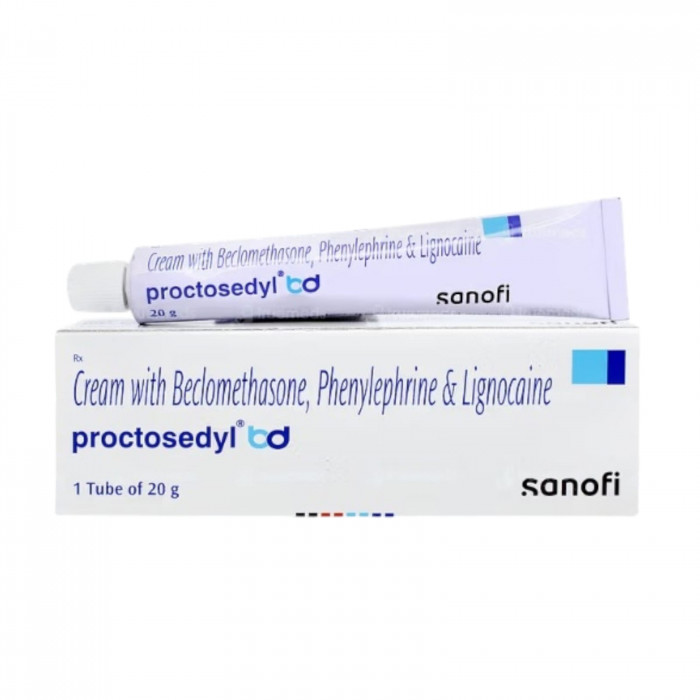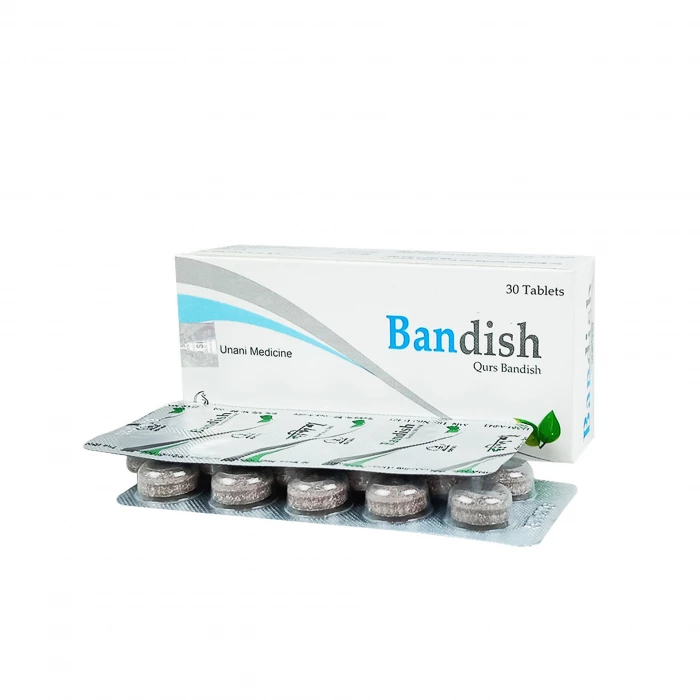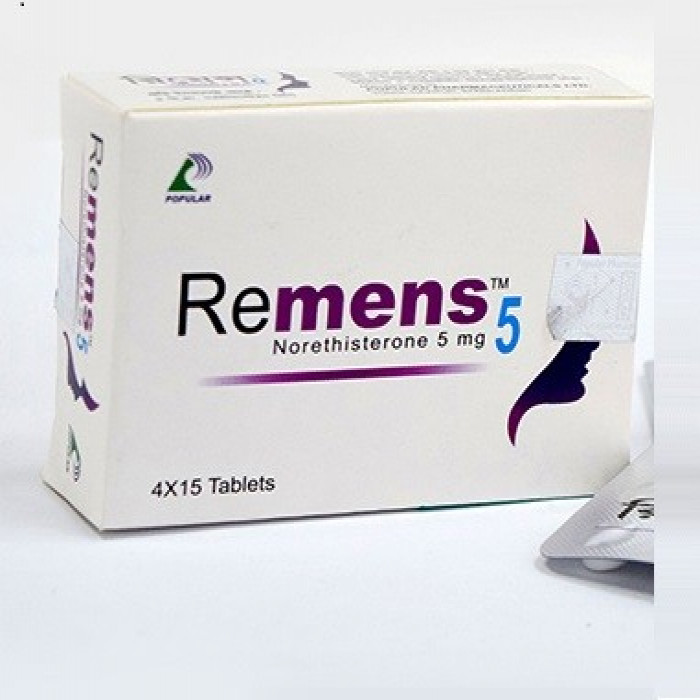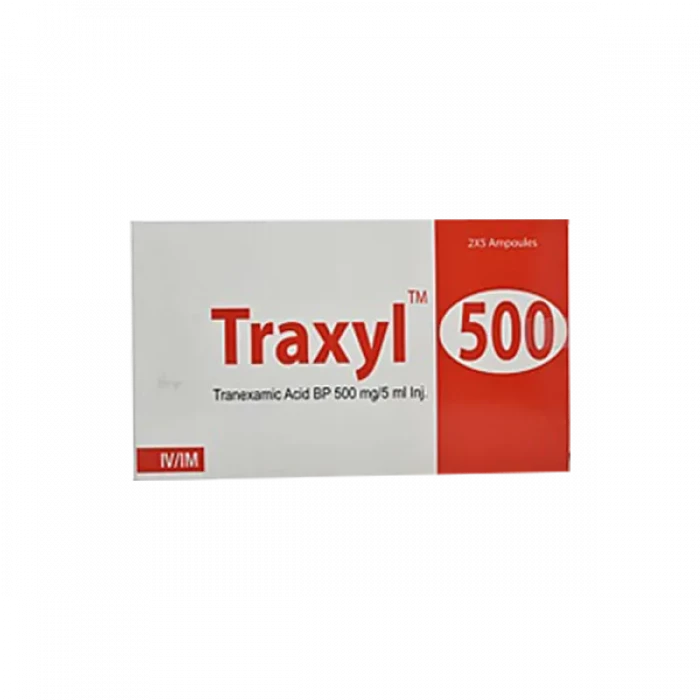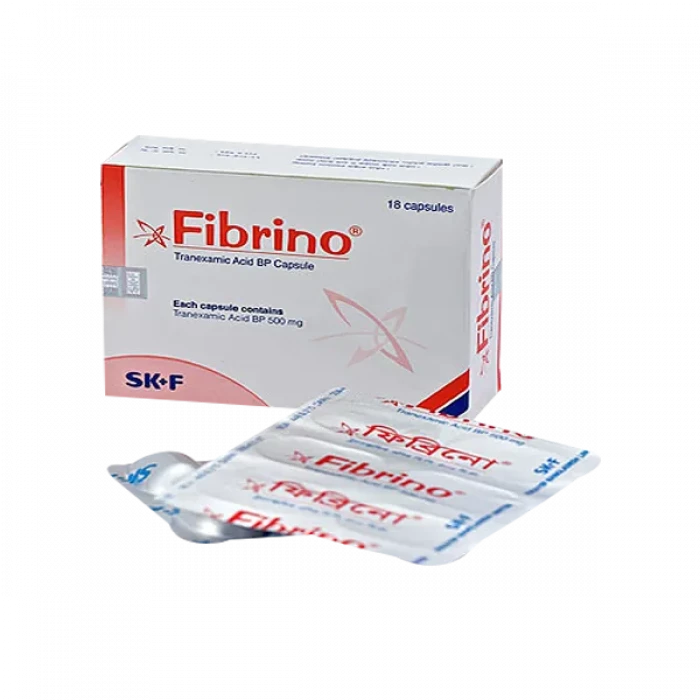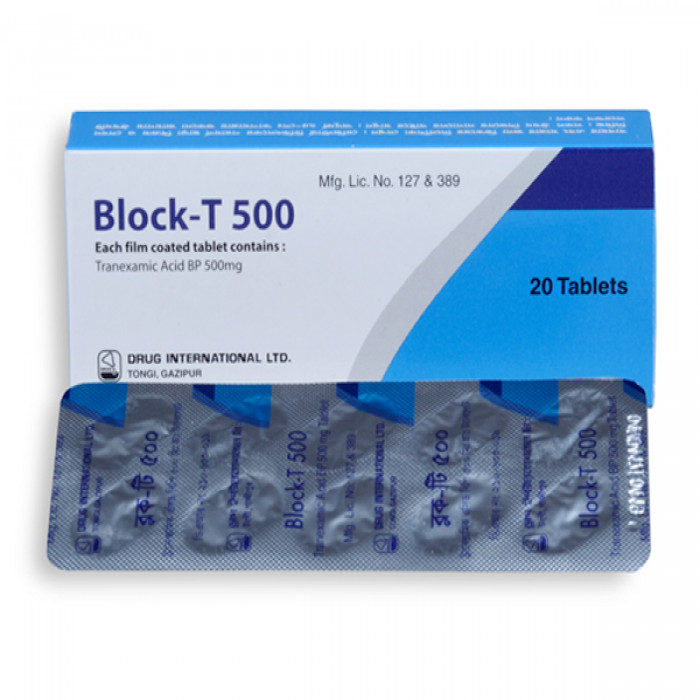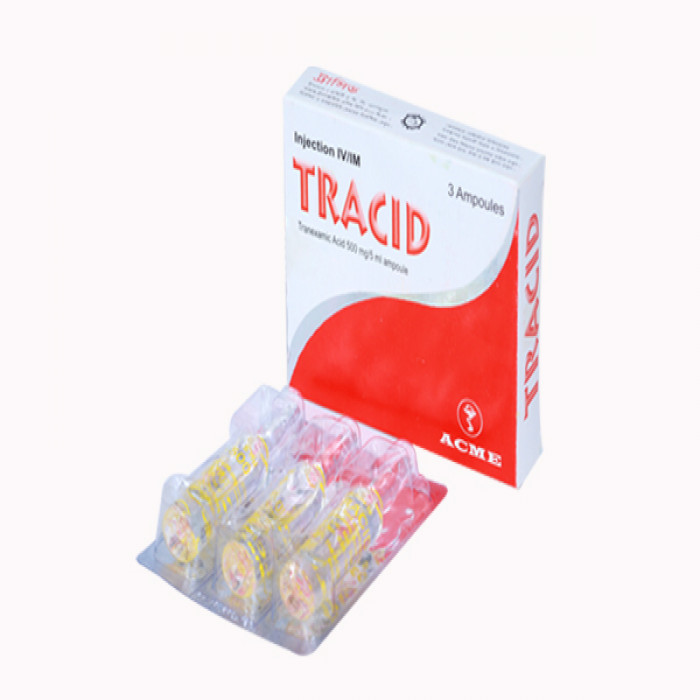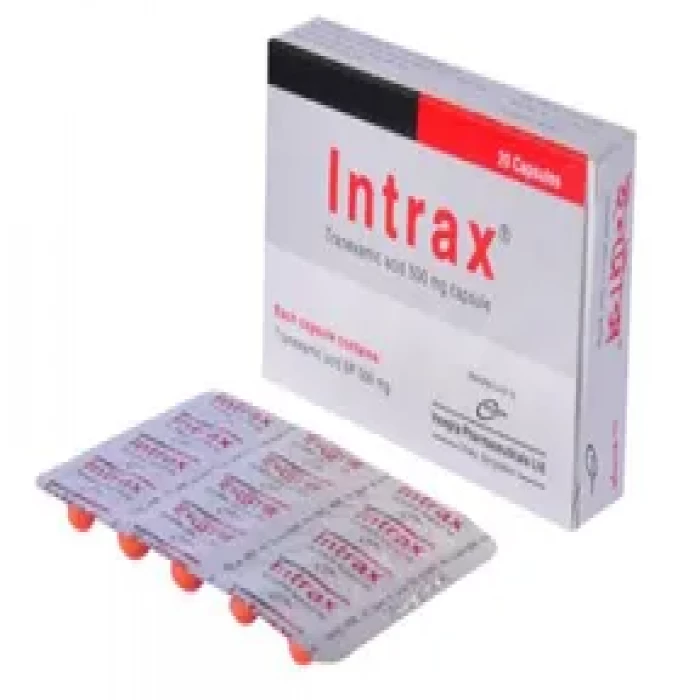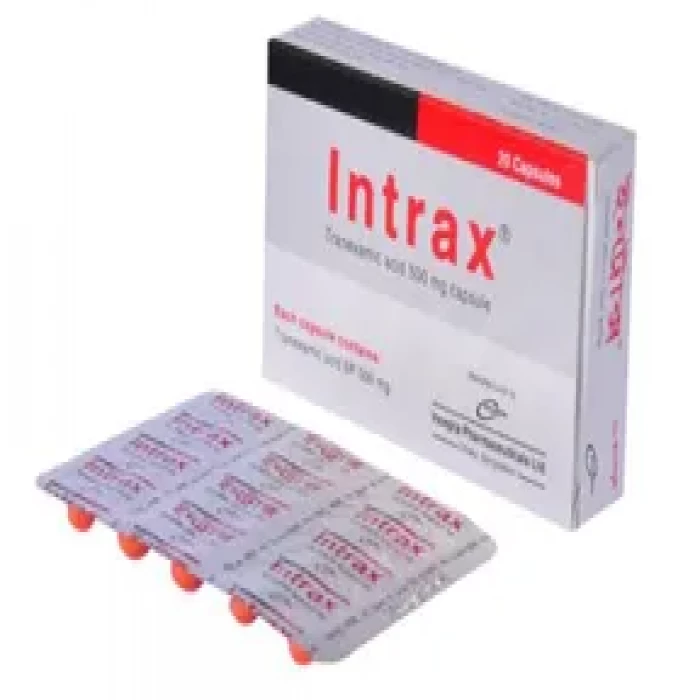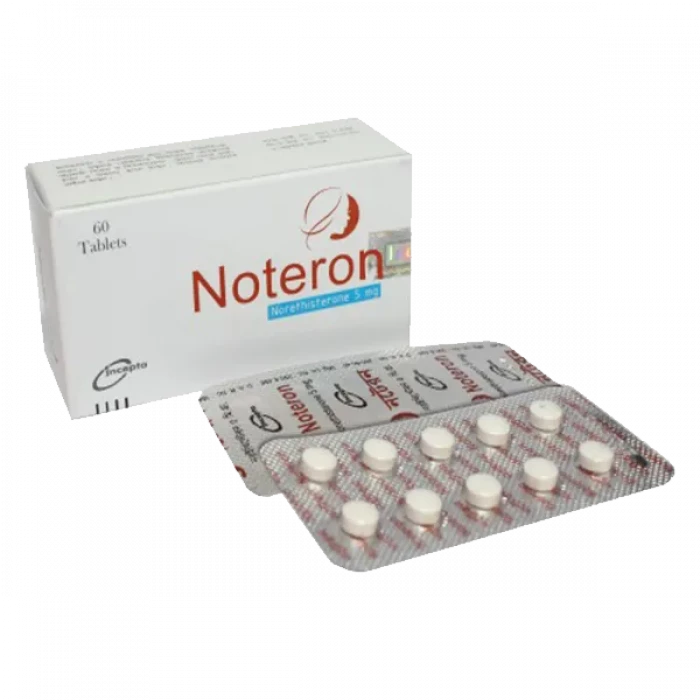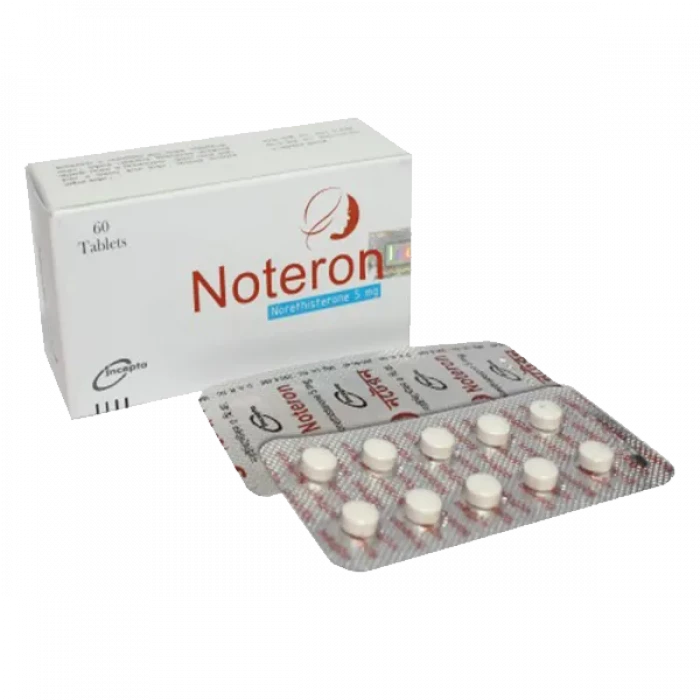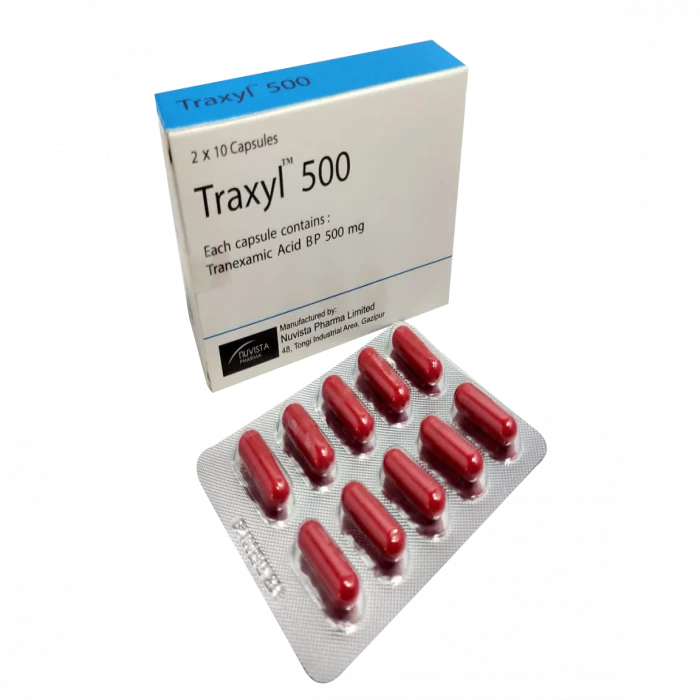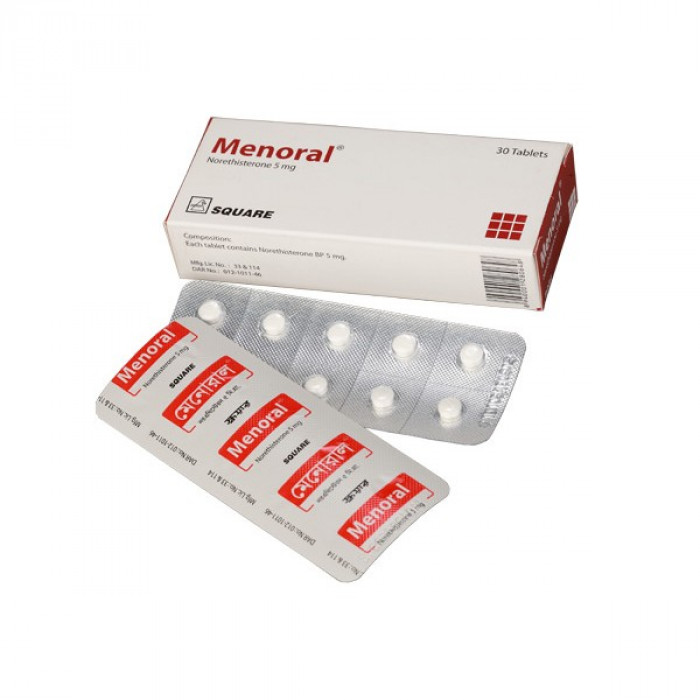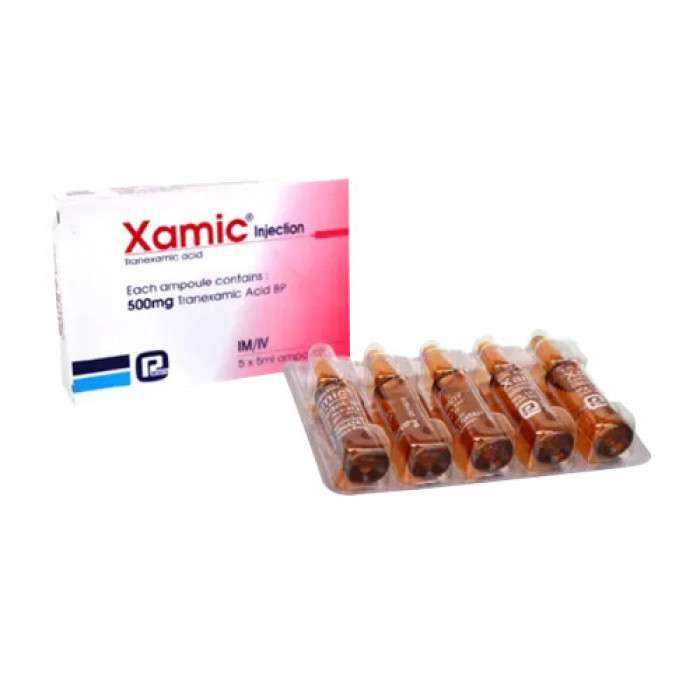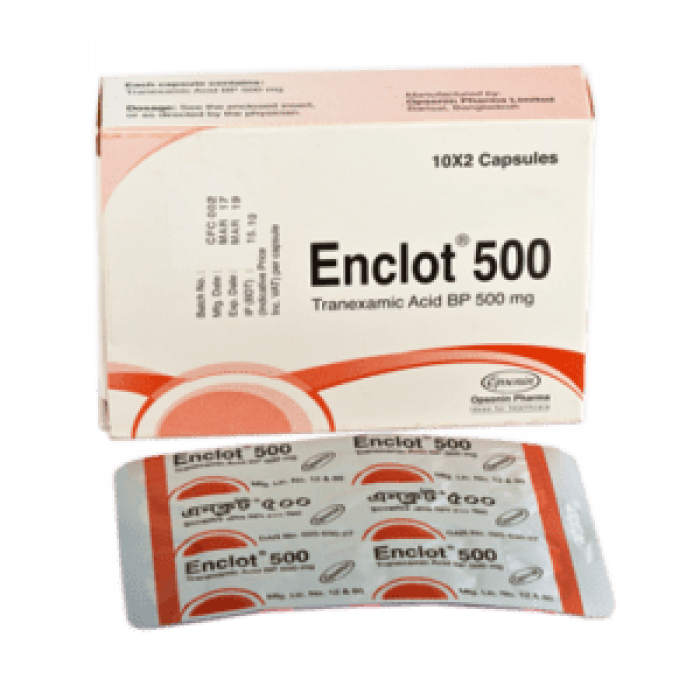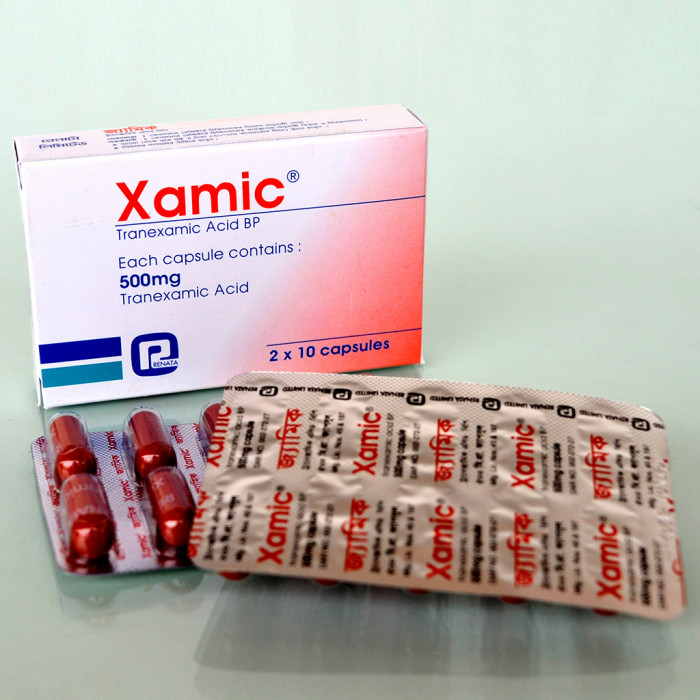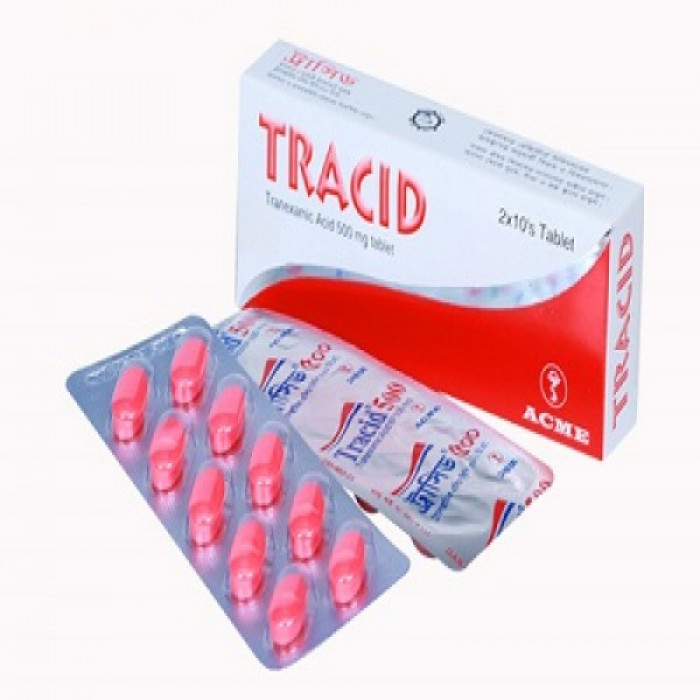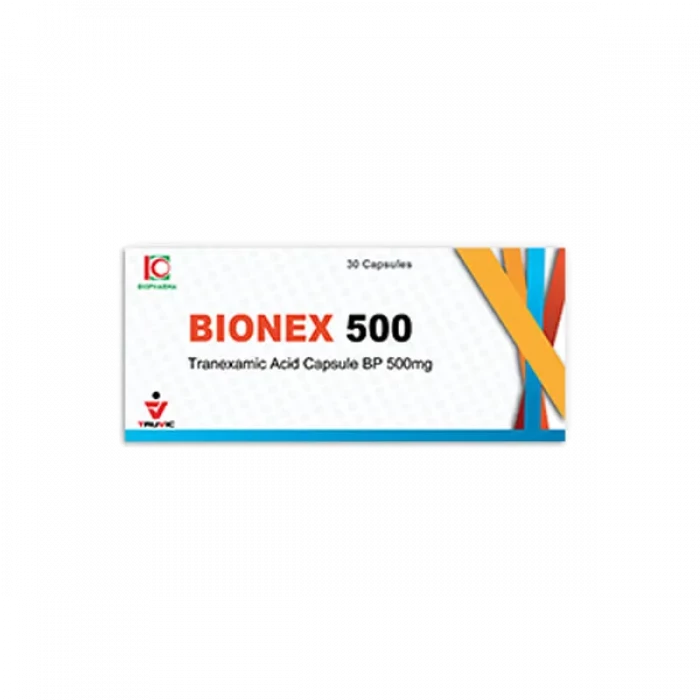
✔ 100% Authentic Product
👁️ Currently Viewing 858
100% Genuine Products, Guaranteed
Safe & Secure Payments, Always
Fast, Secure & Efficient Delivery
Proper Packaging
 Cash on Delivery - All over Bangladesh
Cash on Delivery - All over Bangladesh Regular Delivery - 12-24 Hours, Dhaka City*
Regular Delivery - 12-24 Hours, Dhaka City* Regular Delivery - 24-48 Hours, All Over Bangladesh*
Regular Delivery - 24-48 Hours, All Over Bangladesh* ফ্রি ডেলিভারিঃ - ৯৯৯ টাকা+ অর্ডারে, ঢাকা
শহরে
ফ্রি ডেলিভারিঃ - ৯৯৯ টাকা+ অর্ডারে, ঢাকা
শহরে ফ্রি ডেলিভারিঃ - ২৯৯৯ টাকা+ অর্ডারে, ঢাকার
বাহিরে
ফ্রি ডেলিভারিঃ - ২৯৯৯ টাকা+ অর্ডারে, ঢাকার
বাহিরে
✅ Description:
Indications
Bleeding is treated with Bionex 500. In situations like tooth extraction, heavy periods, dysfunctional uterine bleeding, nosebleeds, as well as any oral, prostate, or bladder surgery, it helps to either avoid or lessen bleeding. It is an anti-fibrinolytic, Bionex 500. It stops bleeding by preventing the disintegration of blood clots. The doctor's recommended dose and duration for taking this medication must be followed.
- Medicine: prevention and treatment of parathyroid hemorrhages, gastrointestinal hemorrhages, hemorrhagic syndrome due to leukemia, liver cirrhosis and hemophilia, thrombocytopenic purpura, thrombolytic therapy, and accidents during a blood transfusion.
- Surgery: Preventive and anti-bleeding treatment during surgery of any type and nature, especially lung, cardiovascular, and abdominal surgery, as well as postoperative and traumatic shock.
- Urology: Preventive and anticoagulant treatment of prostate, bladder, and kidney surgery. hematuria.
- Obstetrics: Prevention and treatment of postpartum and puerperal hemorrhage, hemorrhagic endometriosis, functional menorrhagia, idiopathic or intrauterine device-induced menorrhagia (intrauterine device), primitive hyperfibrinolysis (placenta detachment, placental abruption) and cervical erosion.
- In the Department of Otolaryngology: tonsillectomy, specialized general surgery, prevention and treatment of bleeding during epistaxis.
- Department of Stomatology: Maxillofacial surgery, prevention, and anti-bleeding treatment during tooth extraction.
- In oncology (as supportive therapy): Promotes the formation of fibrin capsules to form a barrier, thus inhibiting the growth of ovarian tumors. Cause cancer-related ascites to go away. Reduce bleeding during surgery.
Pharmacology
This is a preparation of tranexamic acid (trans-4-amino methylcyclohexane carboxylic acid). According to the test, Tranexamic acid is a substance with a strong anti-fibrinolytic effect. In vivo and in vitro, its activity is 10 times that of traditional hemostatic agents. The anti-bleeding effect of tranexamic acid is mainly due to the inhibition of plasminogen activation by exogenous activators (such as streptokinase) and endogenous activators (such as urokinase and tissue plasminogen activators). This fact is particularly important for the clinical application of tranexamic acid because it ensures anti-hemorrhage activity against fibrinolytic mechanisms under various conditions.
Tranexamic acid has very low acute toxicity and almost no chronic toxicity. Tranexamic acid is well absorbed orally, and the effect can be observed 1530 minutes after administration. It is mainly excreted through the kidneys, but more slowly than traditional hemostatic agents. These characteristics make the effect of tranexamic acid longer than traditional hemostatic agents. Therefore, a significantly lower single dose of tranexamic acid can be administered over a longer time interval without reducing the plasma level of the drug to an ineffective antifibrinolytic activity level between two doses.
Tranexamic acid at a therapeutic dose Will not interfere with the coagulation process, and it will not be accompanied by any tendency to thrombosis even if it is administered for a long time.
Dosage & Administration
Adults-
The usual dose: is 500-1000 mg 3 times daily.
For prophylaxis: The mean recommended daily doses are 0.5-1 gm orally, and 500 mg by the parenteral (intravenous or intramuscular) route.
For therapy of hemorrhagic manifestations: the oral dose increases to 1-3 gm given in divided doses: in cases of particular seriousness and urgency, begin by injecting an ampoule (500 mg) slowly by intravenous route and administer the necessary subsequent oral doses.
Children-
For prophylaxis: For every kg of body weight from 5-10 mg is orally administered daily in divided doses.
For therapeutic purposes: The oral doses are doubled (from 10 to 20 mg/kg), while the intravenous and intramuscular treatment is begun with 10 mg/kg (=0.5 ml every 5 kg) by the slow intravenous route, continuing the oral administration up to the required dose. Where it is more convenient (e.g. in small babies) the ampoules, diluted in a little sweetened water, may be orally administered instead of the Capsules.
Elderly patients: No reduction in dosage is necessary unless there is evidence of renal failure.
Interaction
Tranexamic Acid is a synthetic amino acid that reacts badly with penicillin-containing solutions (eg: Benzylpenicillin). Thrombolytic medicines like Streptokinase and Urokinase work against Tranexamic Acid's antifibrinolytic effect. Concurrent administration of estrogen-containing medicines, such as oral contraceptives, may increase the risk of thrombus development. During the transfusion, a direct combination of Tranexamic Acid with whole blood should be avoided.
Contraindications
Individual hypersensitivity to the product has been identified. Thromboembolic disease, arterial and venous thrombosis, endocavitary hemorrhages, and severe renal failure are all examples of thromboembolic disease.
Side Effects
Tranexamic Acid is generally well tolerated; there may be infrequent cases of sense of fatigue, conjunctival irritation, nasal blockage, itching, skin reddening, and exanthems.
After oral administration, there may be signs of nausea, diarrhea, and gastric pyrosis.
There are rare cases of postural hypotension.
In the case of hypersensitivity to tranexamic acid, avoid or suspend treatment and start a suitable therapy.
Pregnancy & Lactation
Tranexamic Acid should not be used during known or suspected pregnancy because the drug's transplacental passage and potential effects on the fetus are unclear. Tranexamic Acid is excreted in breast milk at a concentration of about one-twentieth of that seen in maternal blood. In the infant, an antifibrinolytic effect is improbable.
Precautions & Warnings
Tranexamic Acid should be used in cases where there is hyperfibrinolysis. The prophylactic treatment must begin 24 hours before the operation and continue until 3-4 days after it.
The therapy of hemorrhages must be prolonged for at least 24 hours after manifestations have disappeared.
In hematuria, especially when this is not accompanied by any other hemorrhagic manifestations, reduce the doses to prevent the formation of clots in the urinary tract.
Tranexamic Acid must not be used in serious renal insufficiency or anuric syndromes and must only be used with caution in less serious renal dysfunctions.
The administration of the product requires particular care in cardiopathic and hepatopathy subjects.
Storage Conditions
Store in a dry place at 15-30°C, away from light, and keep out of children's reach.
⚠️Disclaimer:
At ePharma, we’re committed to providing accurate and accessible health information. However, all content is intended for informational purposes only and should not replace medical advice from a qualified physician. Please consult your healthcare provider for personalized guidance. We aim to support, not substitute, the doctor-patient relationship.





